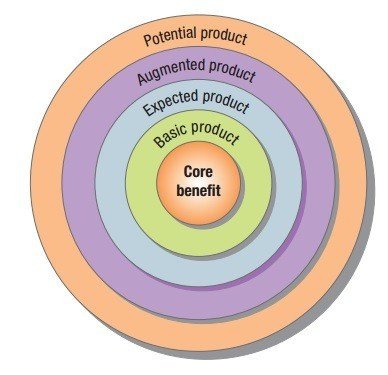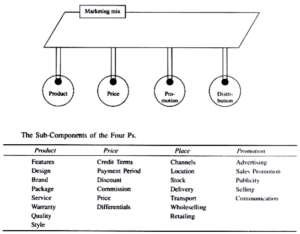Product Line, Meaning, Working, Product Line Extension, Features, Types, Benefits, and Challenges
Product Line refers to a group of related products offered by a company that share similar characteristics, target the same market, or serve a similar purpose. These products typically fall under a single brand and are marketed together, allowing companies to leverage their branding and promotional strategies effectively. For example, a beverage company might have a product line that includes various types of soft drinks, juices, and bottled water. By managing product lines strategically, businesses can meet diverse customer needs while optimizing their overall product mix.
How Product Lines Work?
Product lines play a crucial role in a company’s overall marketing strategy by grouping related products to meet specific customer needs.
-
Definition and Structure
Product line is a collection of products that are related in terms of their functions, target market, or marketing strategy. Companies organize their offerings into product lines to streamline management and marketing efforts.
-
Target Market Identification
Each product line is designed to cater to a specific segment of the market. By understanding the needs and preferences of target customers, businesses can develop products within the line that appeal directly to that audience.
-
Branding and Positioning
Products within a line often share a common brand name and identity. This creates brand recognition and loyalty, making it easier for customers to associate new products with established ones. Positioning the entire line effectively can enhance overall brand perception.
-
Product Variations
Companies can offer variations within a product line to address different consumer preferences. These variations may include differences in size, flavor, features, or packaging. For example, a snack brand might offer different flavors or health-focused options within its chip product line.
-
Cross-Promotion
Having a well-defined product line allows for cross-promotion of products. For example, if a company launches a new flavor of chips, it can promote it alongside other products in the same line, encouraging customers to try multiple offerings.
-
Economies of Scale
By producing a range of products within the same line, companies can benefit from economies of scale in production, distribution, and marketing. Shared resources can lead to cost savings and improved efficiency.
-
Flexibility and Adaptation
Product lines provide flexibility for companies to adapt to changing market trends and consumer preferences. Businesses can introduce new products, retire underperforming ones, or make adjustments based on feedback from the target market.
-
Performance Evaluation
Companies can evaluate the performance of a product line as a whole, assessing sales, market share, and profitability. This analysis helps in making strategic decisions about resource allocation, marketing efforts, and future product development.
-
Market Expansion
Successful product lines can serve as a foundation for market expansion. Companies can introduce entirely new lines based on the success of existing products, leveraging brand equity and consumer loyalty.
-
Lifecycle Management
Each product line goes through a lifecycle, from introduction to growth, maturity, and decline. Companies must actively manage their product lines by innovating, repositioning, or phasing out products to maximize profitability.
Product Line Extension
Product Line Extension refers to the strategy of adding new products to an existing product line to attract a larger customer base or to meet the evolving needs of consumers. This approach allows companies to leverage their established brand equity and customer loyalty while expanding their offerings.
Key Features of Product Line Extension
-
Broadened Range of Products
Product line extension involves introducing variations or new items that are related to the existing products in the line. For instance, a yogurt brand might add new flavors, low-fat options, or plant-based varieties to its product line.
-
Utilization of Brand Equity
By extending a well-known product line, companies can capitalize on the recognition and trust established with their existing products. This can lead to quicker acceptance of new products by consumers.
-
Meeting Diverse Customer Needs
Product line extensions can address different consumer preferences, demographics, and market segments. For example, a beverage company may introduce a new energy drink variant to cater to health-conscious consumers.
-
Increased Market Share
By offering a wider variety of products, companies can capture a larger share of the market and reduce competition. This is particularly effective in crowded markets where differentiation is crucial.
-
Reduced Risk of New Product Failure
Launching a product extension under an established brand is generally less risky than introducing an entirely new brand. Consumers are more likely to try a new product from a brand they already trust.
Types of Product Line Extensions
1. New Flavors or Varieties: Adding different flavors or styles to an existing product. For example, a snack brand may introduce sweet and spicy versions of its chips.
2. Size Variations: Offering products in different sizes, such as single-serving or family-size packages, to meet varying consumption needs.
3. Healthier Options: Introducing low-calorie, organic, or gluten-free versions of existing products to cater to health-conscious consumers.
4. Targeting New Demographics: Developing products aimed at different age groups, lifestyles, or interests, such as a kids’ version of a popular cereal.
5. Seasonal or Limited Editions: Launching special edition products tied to seasons, holidays, or events to stimulate interest and drive sales.
Benefits of Product Line Extension:
1. Increased Sales Potential: A broader product range can lead to higher overall sales, as customers may purchase multiple items from the same line.
2. Enhanced Brand Loyalty: By continuously offering new options, companies can maintain customer interest and encourage repeat purchases.
3. Efficient Use of Resources: Companies can utilize existing marketing strategies, distribution channels, and production processes to launch new products, reducing costs.
4. Competitive Advantage: A diverse product line can help a company stand out in a competitive marketplace by offering more choices to consumers.
Challenges of Product Line Extension
- Brand Dilution
If not managed properly, extending a product line can dilute brand identity. Consumers may become confused about what the brand stands for if there are too many unrelated products.
- Cannibalization
New products may compete with existing ones, potentially leading to a decline in sales of the original products.
- Quality Control
Maintaining consistent quality across an extended product line can be challenging, especially when introducing new variants.
- Market Research Needs
Thorough market research is necessary to ensure that the new products meet consumer needs and preferences. Failure to do so can result in unsuccessful product launches.
Examples of Product Line Extension
- Coca-Cola
The introduction of Diet Coke and Coca-Cola Zero Sugar expanded the original Coca-Cola product line to cater to health-conscious consumers.
- Lay’s
Lay’s offers a variety of flavors and limited-edition chips, including spicy, exotic, and local flavors to appeal to different tastes.
- Oreo
Oreo cookies have been extended to include various flavors (like birthday cake and red velvet) and formats (such as Oreo Thins and Mega Stuf).
- Nike
Nike has expanded its line of athletic shoes to include specialized versions for different sports, lifestyles, and even collaborations with celebrities.
- Procter & Gamble
P&G has extended its Tide brand to include Tide Pods, Tide Free & Gentle, and other variants, addressing various laundry needs.


